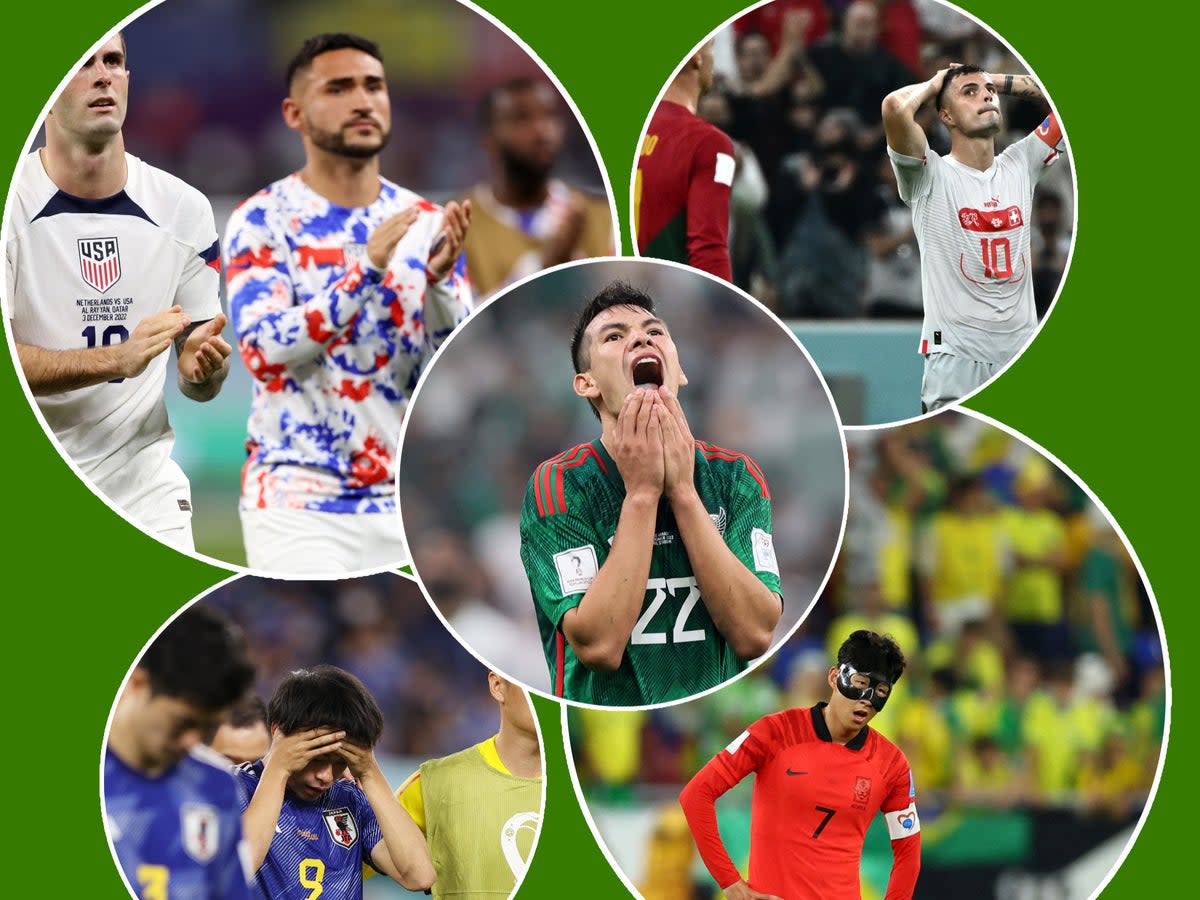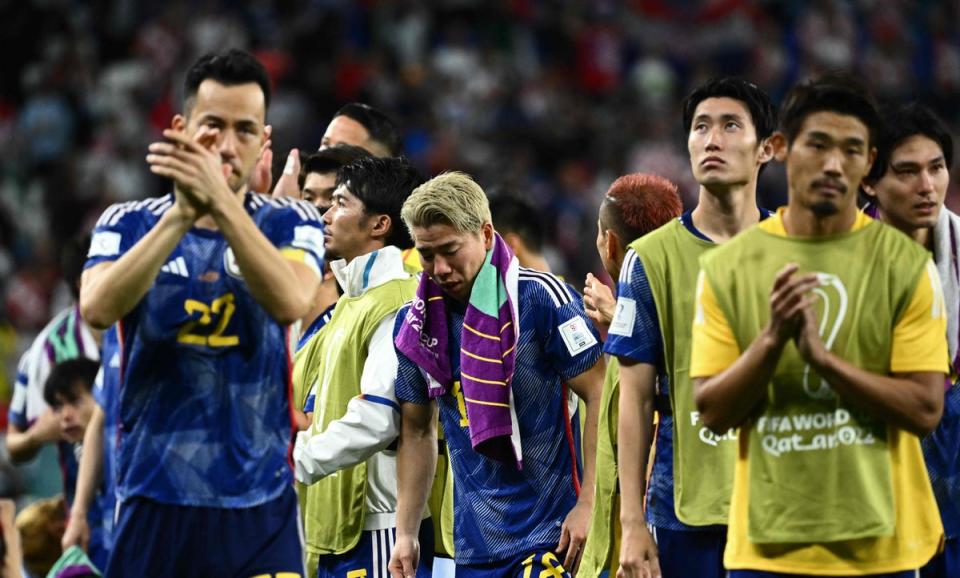World Cup’s glass ceiling cuts off chasing pack from promised land of quarter-finals

In Mexico, they call it “la maldicion del quinto Partido”. The curse of the fifth game. The curse being, in fact, that there isn’t a fifth game for El Tri, the side with the unwanted record of going out of the World Cup in the last 16 on the most consecutive occasions. This year, it was the curse of the fourth game: for the first time since 1990, Mexico were not found in the knockout stages.
But others can testify to the curse. Since they were quarter-finalists in 2002, the United States have gone out in the first knockout round three times. Japan can beat that, falling at the same hurdle in 2002, 2010, 2018 and 2022. South Korea were semi-finalists on home soil 20 years ago; abroad, however, they cannot reach the last eight. Switzerland, too, could progress further in front of their own crowds but, since hosting the tournament in 1954, they have five last-16 exits, including the last three in a row.
“We had great plans, we wanted to make history,” said Switzerland manager Murat Yakin. In one respect, his side did: they lost 6-1 to Portugal. Yet perhaps the outcome of half of the first eight knockout matches was inevitable: a quartet of sides go out when they always do.
They keep striking the same glass ceiling. “We could not break through the round of 16 and we could not have a new perspective and see a new landscape,” lamented Japan manager Hajime Moriyasu. His United States counterpart Gregg Berhalter said: “Now it is about, can we keep that up and take it to another level?” He has a young team and his country are co-hosts in 2026; otherwise the evidence would suggest not. For a group of teams, this seems their level, their limit.
Sometimes the margins are cruelly small. Japan have lost two penalty shootouts in the last 16 and took a 2-0 lead against Belgium in 2018, only to go down 3-2. Switzerland were thrashed this time but spot kicks were their undoing in 2006. The nature of shootouts can underline how this has become a psychological barrier for some countries; the quarter-finals represent a mythical land for them. Winning any knockout tie in a World Cup, against anyone, anywhere, anyhow can seem fearsomely difficult.
Which, in fairness, it often is. Japan may reflect their finest results have come in the group stages; they defeated Spain and Germany in Qatar, just as both Mexico and South Korea overcame the Germans in 2018. The more meaningful shocks, like Morocco’s elimination of Spain, come later.
There are other factors. For Japan, South Korea, Mexico and the USA, if not Switzerland, an inability to stop the European and South American hegemony of the global game is reflected in the knockout stages. At the business end of the tournament, football’s old world tends to get the better of the new as Nigeria, with three last-16 exits, and Australia, with two, can also testify.
It is undeniable that the major national teams in other continents have improved over the decades; Japan and the USA feel better than they were four years ago. Yet it is also the case that even in making them competitive, tactically superior and exporting many of their players to the leading domestic leagues, they still tend to be between about the 13th and 25th best teams in the global game.

Football’s strength in depth is such that the quarter-finals can seem the final frontier to many an Asian, African or North American team. At any given point, there tends to be about a dozen sides of a higher standard; even if two or three go out in the group stages and a couple more in the last 16, often to others of the favourites, the rest can congregate in the last eight. Those supposed powers who can navigate their way out of the group tend to have the potential to go a long way.
The rest can often get eliminated by those expected to be the best. Sometimes it seems an inevitable consequence of coming second in a group. Sometimes the draw looks unkind. For Mexico, the missed opportunity was their 2002 meeting with the United States; since then, their defeats have come to Argentina, Argentina, the Netherlands and Brazil. None is anything remotely resembling a disgrace.
But while there are European and South American teams who can veer in and out of that top 12 – Croatia, Belgium and Uruguay are cases in point – maybe their continental championships, with its higher standards, prepare its sides better for a World Cup. Maybe the serial last-16 losers simply don’t have enough world-class players, and Heung-Min Son may be the lone candidate among the four teams in question now. Perhaps the new format of a 48-team World Cup will alter the equation, and at least it may afford Mexico the chance of a fifth game before reaching the last eight. But for now, it may feel as though the arc of progress has been halted for a host of countries who can’t progress to the quarter-finals.

 Yahoo Movies
Yahoo Movies 
